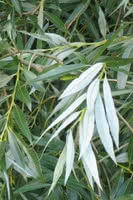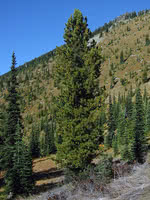Mon-Fri 9am - 5pm Mountain time
Silver Leaf Willow vs Whitebark Pine
Salix alba var. sericea
Pinus albicaulis
NOT AVAILABLE THIS SEASON - MIGHT RETURN
NOT AVAILABLE THIS SEASON - MIGHT RETURN
Silver Leaf Willow has orangish bark and long, silvery grey leaves. Bees and other insects are attracted to its flowers.
Popular as an ornamental tree for parks, it is also used as a shelterbelt species. It may not be as cold hardy as some of the other willow varieties, however.
Endangered
Whitebark Pine is a beautiful coniferous tree that produces tasty, edible nuts. You'll love this trees' rustic and natural appeal, making it an excellent specimen tree.
It is an endangered species from the Rocky Mountains, this slow grower seldom produces cones until it is 50 years old but regularly survives to be 500 or more years of age. Our staff think it is among the most attractive pines we have grown.
Whitebark Pine is well-known for maintaining snow drifts, providing food and shelter to many species of wildlife, and bringing stability to steep slopes. This high elevation and adaptable tree is deer resistant and can withstand a variety of soils and moisture levels.

